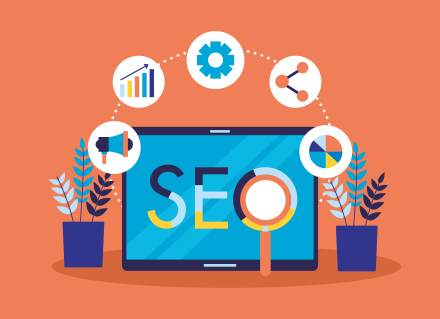The 50-Millisecond Test: How Quickly Users Judge Your Website
In the digital landscape of 2025, your website faces a brutal reality: visitors make snap judgments about your business faster than you can blink. Research shows that users form their first impression of your website in just 50 milliseconds—that's 0.05 seconds. This fraction of a second can determine whether a potential customer stays or bounces.
Think about that. Before your visitors consciously process your carefully crafted content or strategically placed calls-to-action, their brains have already made a gut decision about your credibility, professionalism, and relevance to their needs.
In 2025, with attention spans shrinking to less than 8 seconds, your website doesn't just need to load quickly—it needs to communicate quality instantly. At Engage Ascend Creative, we've seen how these split-second decisions directly impact conversion rates, bounce rates, and ultimately, your bottom line.
The Psychology Behind First Impressions
Our brains are wired to make rapid judgments as a survival mechanism. When we encounter something new—whether a person, situation, or website—our visual cortex processes the information at lightning speed, triggering emotional responses before conscious thought kicks in.
For websites, this means:
- Visual processing dominates – An overwhelming 94% of first impressions are design-related, not content-related
- Emotional reactions precede logical analysis – Users feel before they think
- Pattern recognition shapes expectations – Users compare your site to mental templates of "good" vs. "bad" websites
- Cognitive fluency determines comfort – The easier something is to process mentally, the more positively it's perceived
"Unlike meeting someone in person where social norms might give you a second chance, websites get no such courtesy," explains cognitive psychologist Dr. Maya Hernandez. "The digital equivalent of 'judging a book by its cover' is not just common—it's the default behavior."

Key Design Elements That Make or Break First Impressions in 2025
1. Visual Hierarchy and Layout
In 2025's competitive digital landscape, strategic visual hierarchy has become more crucial than ever. Users expect to understand what's important on your page within milliseconds.
What works now: Clean, asymmetrical layouts with clear focal points and intentional white space guide the eye naturally. The most successful websites use what designers call "visual weight"—making important elements stand out through size, color, or position while maintaining overall harmony.
What doesn't: Cluttered designs with competing elements create cognitive overload, triggering the psychological phenomenon known as "analysis paralysis," where users feel overwhelmed and exit rather than make a decision.
2. Color Psychology and Brand Identity
Color choices trigger specific emotional responses and can increase brand recognition by up to 80%. In 2025, we're seeing sophisticated color strategies that go beyond basic color theory.
The most effective approaches:
- Contextual color adaptation based on user behavior
- Strategic contrast to highlight action items
- Cohesive color systems that maintain recognition across platforms
- Subtle color shifts that respond to user interaction, creating a sense of "aliveness"
At Engage Ascend Creative, we've found that brands with thoughtfully implemented color systems see engagement rates 32% higher than those with inconsistent or poorly considered color application.
3. Typography and Readability
Typography isn't just about choosing pretty fonts—it's about creating comfortable reading experiences that respect how the human eye processes text.
Modern typography best practices include:
- Variable fonts that adapt to different screen sizes and reading conditions
- Strategic contrast between headings and body text
- Line lengths of 50-75 characters for optimal reading speed
- Appropriate letter spacing and line height to reduce eye strain
"Typography is like the voice of your brand speaking directly to visitors," notes Mike at Engage Ascend Creative. "When users struggle to read your content, they're likely to associate that frustration with your brand itself."

The Mobile-First Mindset: Non-Negotiable in 2025
With nearly 60% of web traffic now coming from smartphones, mobile optimization isn't just important—it's essential. First impressions on mobile devices are even more critical, as screen limitations amplify design flaws.
Key mobile considerations that impact first impressions:
- Thumb-friendly navigation (placing important elements within natural thumb reach)
- Progressive loading patterns that prioritize visible content
- Gesture-based interactions that feel natural and intuitive
- Performance optimization to prevent the "rage tap" phenomenon
"The gap between a good and bad mobile experience has narrowed dramatically," observes UX researcher Samantha Liu. "Users in 2025 don't just prefer good mobile experiences—they expect them, and they punish brands that deliver subpar mobile interfaces by immediately leaving."
Trust Signals: Subtle Cues That Build Confidence
Beyond aesthetics, certain design elements serve as psychological trust signals that can dramatically influence first impressions:
- Professional imagery – High-quality, authentic photos outperform stock photography in building trust
- Security indicators – Subtle but visible security badges reassure visitors about data protection
- Social proof integration – Strategically placed testimonials and review counts reduce perceived risk
- Brand consistency – Design elements that align with expectations from other brand touchpoints
These trust signals work on a subconscious level, triggering what psychologists call "heuristic processing"—mental shortcuts that help users decide whether a website is credible without deep analysis.

The Neuroscience of User Experience: What's Happening in the Brain
When a user lands on your website, their brain processes the experience through several neural pathways:
- The amygdala responds emotionally to visual stimuli, triggering approach or avoidance instincts
- The anterior cingulate cortex monitors for errors or inconsistencies that might signal danger
- The ventral striatum activates in response to pleasing design, potentially triggering reward sensations
This neurological activity happens automatically, creating an emotional response before conscious evaluation begins.
"What's fascinating about web design psychology is how much happens beneath awareness," explains neuroscientist Dr. James Morton. "By the time you're consciously thinking about a website, your brain has already made dozens of unconscious judgments."
Practical Application: How to Create Positive First Impressions
1. Conduct First Impression Testing
Use specialized testing methods to measure those crucial first seconds:
- Five-second tests where users view your site briefly then describe what they remember
- Eye-tracking studies to see what draws attention first
- Emotional response testing using facial recognition technology
2. Optimize Your Above-the-Fold Experience
The portion of your website visible without scrolling carries disproportionate weight in forming first impressions:
- Present a clear value proposition immediately
- Ensure the most important content appears first
- Create visual breathing room to prevent overwhelm
- Consider progressive disclosure techniques for complex information
3. Align Design with User Expectations
Modern users have developed specific mental models for different types of websites:
- E-commerce sites should immediately showcase products and easy navigation
- Service businesses need clear service offerings and trust signals
- Content sites must provide immediate value and clear information hierarchy
4. Prioritize Emotional Design
Emotional design elements that create positive first impressions include:
- Micro-interactions that delight without distracting
- Strategic use of white space to create visual comfort
- Personality-infused design elements that differentiate your brand
- Thoughtful animation that guides attention rather than demanding it
Common First Impression Mistakes to Avoid in 2025
- Technological showboating – Using flashy effects that impress designers but frustrate users
- Decision overload – Presenting too many options or calls-to-action simultaneously
- Slow loading experiences – Each 100ms delay in load time can reduce conversion rates by 7%
- Inconsistent brand presentation – Disconnects between marketing materials and website experience
- Neglecting accessibility – Excluding potential customers with disabilities (and potentially facing legal issues)
Conclusion: The Lasting Impact of First Impressions
In 2025's digital ecosystem, the psychology of first impressions has become more important than ever. As attention spans continue to shrink and competition for that attention intensifies, the businesses that thrive will be those who understand and apply these psychological principles to create instantly engaging digital experiences.
Remember that your website isn't just a digital brochure—it's often the first employee that potential customers meet. Make sure it's making the right impression.
At Engage Ascend Creative, we specialize in creating websites that make powerful first impressions based on solid psychological principles. Our approach combines aesthetic design with strategic thinking to ensure your website connects with visitors in those crucial first moments.
Want to learn how your website's first impression stacks up? Contact us for a free first impression audit and discover opportunities to transform those split-second judgments into lasting business relationships.






Leave a Comment